Junhyeok Cha
Spectral Normalization for Lipschitz-Constrained Policies on Learning Humanoid Locomotion
Apr 11, 2025Abstract:Reinforcement learning (RL) has shown great potential in training agile and adaptable controllers for legged robots, enabling them to learn complex locomotion behaviors directly from experience. However, policies trained in simulation often fail to transfer to real-world robots due to unrealistic assumptions such as infinite actuator bandwidth and the absence of torque limits. These conditions allow policies to rely on abrupt, high-frequency torque changes, which are infeasible for real actuators with finite bandwidth. Traditional methods address this issue by penalizing aggressive motions through regularization rewards, such as joint velocities, accelerations, and energy consumption, but they require extensive hyperparameter tuning. Alternatively, Lipschitz-Constrained Policies (LCP) enforce finite bandwidth action control by penalizing policy gradients, but their reliance on gradient calculations introduces significant GPU memory overhead. To overcome this limitation, this work proposes Spectral Normalization (SN) as an efficient replacement for enforcing Lipschitz continuity. By constraining the spectral norm of network weights, SN effectively limits high-frequency policy fluctuations while significantly reducing GPU memory usage. Experimental evaluations in both simulation and real-world humanoid robot show that SN achieves performance comparable to gradient penalty methods while enabling more efficient parallel training.
Sim-to-Real of Humanoid Locomotion Policies via Joint Torque Space Perturbation Injection
Apr 09, 2025Abstract:This paper proposes a novel alternative to existing sim-to-real methods for training control policies with simulated experiences. Prior sim-to-real methods for legged robots mostly rely on the domain randomization approach, where a fixed finite set of simulation parameters is randomized during training. Instead, our method adds state-dependent perturbations to the input joint torque used for forward simulation during the training phase. These state-dependent perturbations are designed to simulate a broader range of reality gaps than those captured by randomizing a fixed set of simulation parameters. Experimental results show that our method enables humanoid locomotion policies that achieve greater robustness against complex reality gaps unseen in the training domain.
MOB-Net: Limb-modularized Uncertainty Torque Learning of Humanoids for Sensorless External Torque Estimation
Feb 17, 2024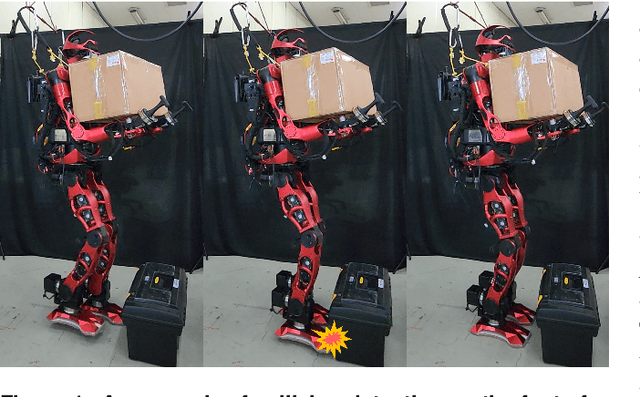


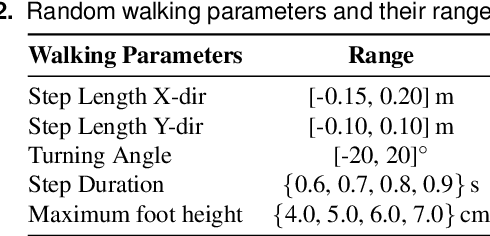
Abstract:Momentum observer (MOB) can estimate external joint torque without requiring additional sensors, such as force/torque or joint torque sensors. However, the estimation performance of MOB deteriorates due to the model uncertainty which encompasses the modeling errors and the joint friction. Moreover, the estimation error is significant when MOB is applied to high-dimensional floating-base humanoids, which prevents the estimated external joint torque from being used for force control or collision detection in the real humanoid robot. In this paper, the pure external joint torque estimation method named MOB-Net, is proposed for humanoids. MOB-Net learns the model uncertainty torque and calibrates the estimated signal of MOB. The external joint torque can be estimated in the generalized coordinate including whole-body and virtual joints of the floating-base robot with only internal sensors (an IMU on the pelvis and encoders in the joints). Our method substantially reduces the estimation errors of MOB, and the robust performance of MOB-Net for the unseen data is validated through extensive simulations, real robot experiments, and ablation studies. Finally, various collision handling scenarios are presented using the estimated external joint torque from MOB-Net: contact wrench feedback control for locomotion, collision detection, and collision reaction for safety.
Proprioceptive External Torque Learning for Floating Base Robot and its Applications to Humanoid Locomotion
Sep 08, 2023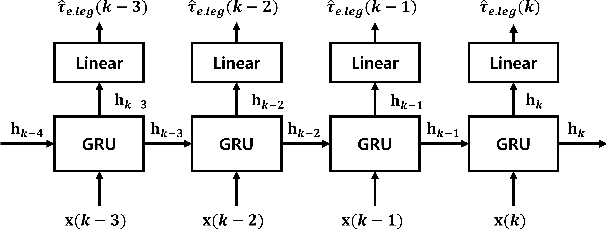

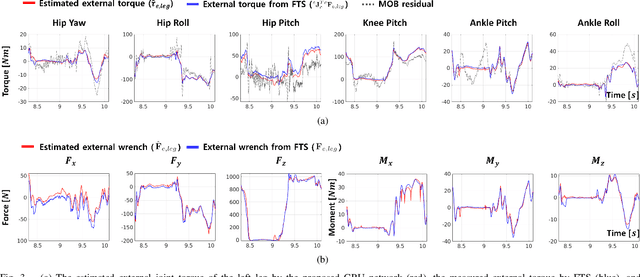
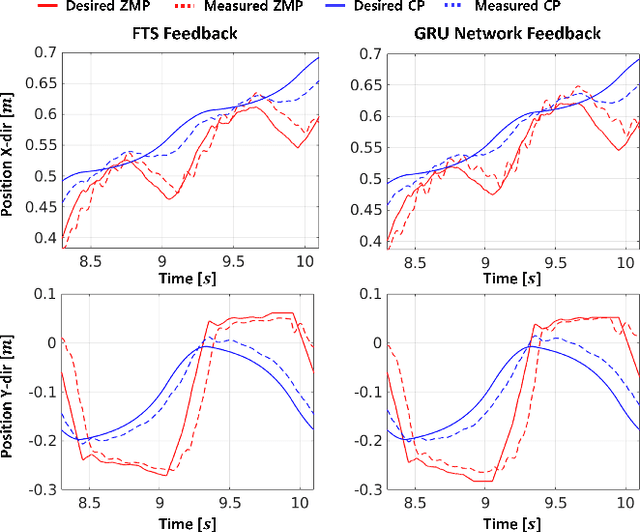
Abstract:The estimation of external joint torque and contact wrench is essential for achieving stable locomotion of humanoids and safety-oriented robots. Although the contact wrench on the foot of humanoids can be measured using a force-torque sensor (FTS), FTS increases the cost, inertia, complexity, and failure possibility of the system. This paper introduces a method for learning external joint torque solely using proprioceptive sensors (encoders and IMUs) for a floating base robot. For learning, the GRU network is used and random walking data is collected. Real robot experiments demonstrate that the network can estimate the external torque and contact wrench with significantly smaller errors compared to the model-based method, momentum observer (MOB) with friction modeling. The study also validates that the estimated contact wrench can be utilized for zero moment point (ZMP) feedback control, enabling stable walking. Moreover, even when the robot's feet and the inertia of the upper body are changed, the trained network shows consistent performance with a model-based calibration. This result demonstrates the possibility of removing FTS on the robot, which reduces the disadvantages of hardware sensors. The summary video is available at https://youtu.be/gT1D4tOiKpo.
 Add to Chrome
Add to Chrome Add to Firefox
Add to Firefox Add to Edge
Add to Edge